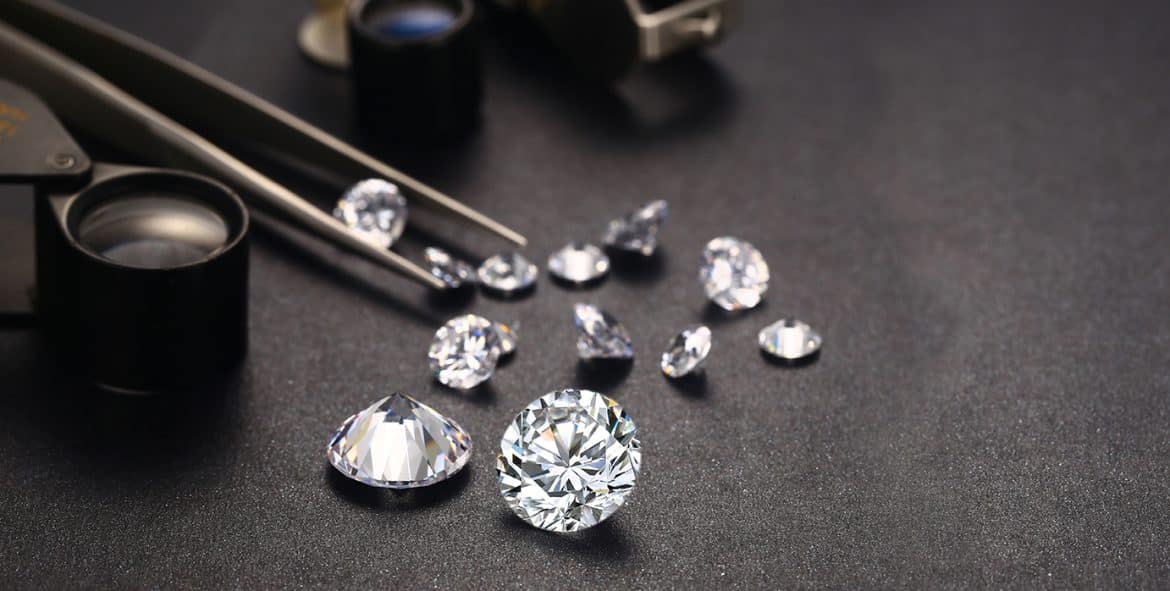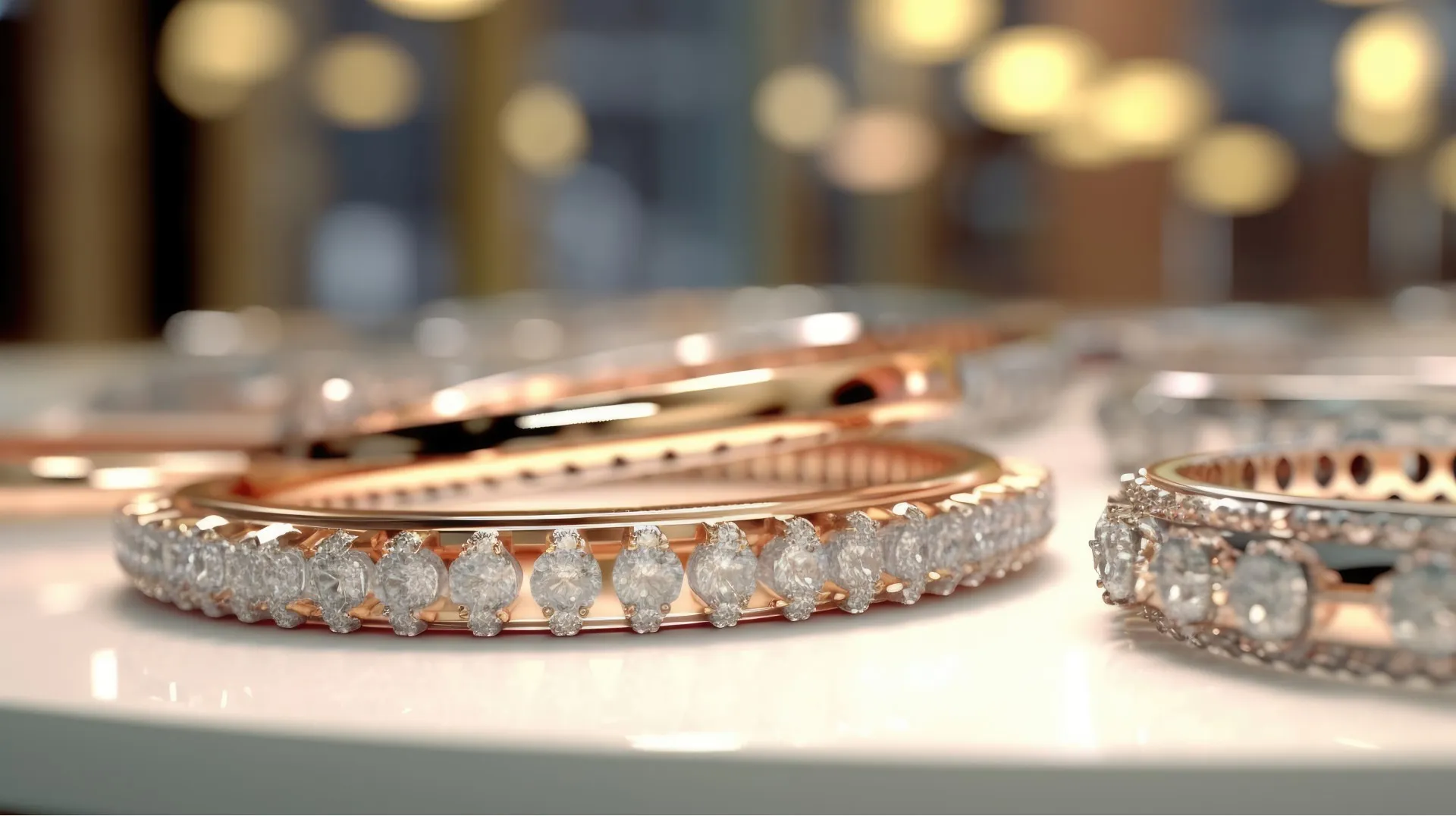Diamonds are not just symbols of luxury and status. They also represent a unique asset class that has intrigued investors for decades. Unlike more volatile investments, diamonds have shown a consistent increase in value, with an average annual appreciation rate of 3% to 4%.
This asset class offers distinct advantages such as confidentiality and portability, which are particularly valued in uncertain economic climates.
However, like any investment, entering the diamond market requires a nuanced understanding of its complexities, including the critical factors that influence diamond valuation and market trends. Let’s take a closer look.
Historical Performance of Diamonds
Diamonds have shown a unique trajectory as an investment vehicle. They typically maintain or gradually increase in value over the decades. The price of high-quality diamonds has appreciated historically, on average between 3% to 4% annually, though these figures can vary significantly based on size, quality, and market demand.
During the 2008 financial crisis, while many asset classes suffered severe losses, diamond prices were relatively stable, clearly showing their potential as a crisis-resistant investment. However, the diamond market is not immune to volatility.
The prices can fluctuate sharply in response to economic shifts, changes in consumer preferences, and disruptions in supply chains, as seen in 2020 when prices dipped by approximately 15% due to reduced demand amidst global economic uncertainties.
What Influences Diamond Valuation
The valuation of diamonds is primarily influenced by the Four Cs: Cut, Color, Clarity, and Carat weight. The cut of a diamond refers to its shape and its proportions, symmetry, and polish, which critically affect its brilliance and thus its price. An excellently cut diamond can cost up to 50% more than a poorly cut one of similar other characteristics.
Color is graded from D (colorless) to Z (light yellow), with colorless diamonds being the rarest and most valuable. Clarity measures the absence of inclusions and blemishes. Flawless diamonds are exceedingly rare and can command prices several times higher than those with slight inclusions visible under magnification.
Carat weight has a disproportionate impact on price. The price per carat of a diamond can increase exponentially as it grows larger, meaning a 2-carat diamond will typically cost more than twice as much as a 1-carat diamond of similar color, clarity, and cut.
There’s also one very common misunderstanding in the diamond trading world when it comes to the value of a particular diamond, according to one reputable diamond buyer from Phoenix. Most people believe their diamond is worth what they paid or what it was appraised for originally, but appraisals vary due to market fluctuations. Try to obtain multiple appraisals from several reputable jewelers if possible.
What are the Benefits of Investing in Diamonds
Investing in diamonds offers several unique benefits. Most notable is their role as a store of value and their inherent portability and confidentiality. Diamonds have historically held their value in times of inflation and economic instability, making them an appealing asset for wealth preservation.
In times of hyperinflation or currency devaluation, diamonds, much like other tangible assets, tend to retain value better than paper currency or volatile stocks. Their small size makes them highly portable, allowing investors to easily transport a significant value in a discreet manner. This is a factor that is especially valued in regions with political or economic instability.
Risks and Challenges
Market volatility, illiquidity, the lack of standardized pricing. These are all risks that face you as a potential investor. Diamond prices are susceptible to sharp fluctuations influenced by economic conditions, changes in consumer preferences, and supply chain disruptions.
With the global economic downturn triggered by the COVID-19 pandemic, the diamond industry saw a significant drop in demand, leading to a 15% decrease in diamond prices in 2020.
Diamonds also exhibit illiquidity compared to more conventional investments like stocks or bonds. Selling a diamond often takes time and can result in a considerable loss if you need to sell it quickly. Unlike gold which has a clear market price per ounce, diamonds also lack a universally recognized pricing standard.
Practical Investment Tips
If you’re considering diamond investment, there are some practical tips that can guide you in this complex market. Educate yourself about the nuances of diamond quality, particularly the Four Cs. This is crucial, as these factors drastically affect valuation.
Engage regularly with established and reputable dealers. Choose reputable sellers who provide GIA (Gemological Institute of America) or AGS (American Gem Society) certified diamonds to ensure authenticity and quality.
Online platforms can offer broader selections and potentially lower prices, but the inability to examine stones in person can be a big drawback. It’s also advisable to allocate only a portion of your investment portfolio to diamonds, as diversification is key to mitigating risks associated with market volatility.
Exit Strategies for Diamond Investors
This is where you realize potential gains and minimize losses. Timing the market is essential, as diamond prices can fluctuate based on economic conditions and trends in luxury spending.
Sell through reputable auction houses or specialized diamond resale markets and vendors. This can often yield higher returns, especially for rare or larger stones.
These platforms attract collectors and investors who may be willing to pay a premium for high-quality or unique diamonds. Try to establish a network of private collectors or jewelers. This can provide you more direct selling opportunities, though typically at a lower price point.
You should also be prepared for the resale process to take time and possibly involve negotiation. Be patient and flexible when trying to maximize your returns.
Final Words
Is diamond investment the right choice for your portfolio? This question warrants careful consideration given the unique attributes and challenges of the diamond market. While diamonds have historically preserved value and offer exceptional portability and privacy, they also present notable risks such as market volatility and illiquidity.
The 15% dip in diamond prices during 2020 showed the potential for significant fluctuations. You should always weigh these factors and ensure you are well-versed in diamond valuation and market dynamics.
A strategic approach combined with thorough research and expert advice is crucial if you’re looking to include diamonds as a part of your diversified investment portfolio.



